Foundation of the Manipulation Technology for Tiny Objects Based on the Control of the Heterogeneity of Electric Fields
Abstract
1. Introduction
2. Materials and Methods
2.1. Experimental Apparatus and Methods
- (1)
- To determine whether the transfer from one initial holding point to an adjacent point is possible.
- (2)
- To investigate the distribution of the electrostatic force when only one of the two electrodes was supplied with high voltage.
2.2. Methods for Numerical Simulation
3. Results and Discussion
3.1. Case of an Isolated Cross Point
3.2. Case of Two Adjacent Cross Points
4. Conclusions
- (a)
- Applying a high voltage between two perpendicularly facing electrodes creates forces toward the cross point. A comparison with the numerical simulation indicated that dielectrophoretic forces were dominant among the forces observed in the experiment at locations sufficiently remote from the cross point.
- (b)
- Large forces are generated near the electrodes to which high voltages were applied. These forces could be attributed to the Coulombic force that works between the charges created by the dielectric barrier discharge.
- (c)
- The glass sphere is successfully transferred from one holding point to an adjacent point.
- (d)
- Two cases, one of which the electrode of the initial holding point was grounded and in the other of which that electrode was floated, were compared. For grounding, large forces are generated immediately before the destination point. This was caused by the large field gradient between the two electrodes. For floating, forces toward the destination were created more uniformly between the initial and destination points. In the latter case, the glass sphere was transferred faster and more smoothly. Therefore, the floating condition was a better manipulation device.
- (e)
- There are at least two problems to be solved in the future work: The manipulation of multiple objects with diverse sizes and shapes, and the development of the countermeasures against the discharge that disturbs transportation by dielectrophoretic force.
Author Contributions
Funding
Data Availability Statement
Acknowledgments
Conflicts of Interest
References
- Nadjem, A.; Kachi, M.; Bekkara, F.; Medles, K.; Zeghloul, T.; Dascalescu, L. Triboelectrification of granular insulating materials as affected by dielectric barrier discharge (DBD) treatment. J. Electrost. 2017, 86, 18–23. [Google Scholar] [CrossRef]
- Zouaghi, A.; Zouzou, N. Numerical modeling of particle motion in traveling wave solar panels cleaning device. J. Electrost. 2021, 110, 103552. [Google Scholar] [CrossRef]
- Sayyah, A.; Horenstein, M.N.; Mazumder, M.K.; Ahmadi, G. Electrostatic force distribution on an electrodynamic screen. J. Electrost. 2016, 81, 24–36. [Google Scholar] [CrossRef]
- Horenstein, M.N.; Mazumder, M.; Sumner, R.C., Jr. Predicting particle trajectories on an electrodynamic screen—Theory and experiment. J. Electrost. 2013, 71, 185–188. [Google Scholar] [CrossRef]
- Calle, C.I.; Buhler, C.R.; McFall, J.L.; Snyder, S.J. Particle removal by electrostatic and dielectrophoretic forces for dust control during lunar exploration missions. J. Electrost. 2009, 67, 89–92. [Google Scholar] [CrossRef]
- Smallwood, J.; Praeger, M.; Chippendale, R.; Lewin, P. Dielectrophoretic adhesion of 50–300 μm particles under ambient atmospheric conditions. J. Electrost. 2016, 82, 1–6. [Google Scholar] [CrossRef]
- Ertugrul, I.; Ulkir, O. Dielectrophoretic separation of platelet cells in a microfluidic channel and optimization with fuzzy logic. RSC Adv. 2020, 10, 33731–33738. [Google Scholar] [CrossRef] [PubMed]
- Lee, D.; Hwang, B.; Kim, B. The potential of a dielectrophoresis activated cell sorter (DACS) as a next generation cell sorter. Micro Nano Syst. Lett. 2016, 4, 2. [Google Scholar] [CrossRef]
- Mustafa, A.; Pedone, E.; Marucci, L.; Moschou, D.; Lorenzo, M.D. A flow-through microfluidic chip for continuous dielectrophoretic separation of viable and non-viable human T-cells. Electrophoresis 2022, 43, 501–508. [Google Scholar] [CrossRef] [PubMed]
- Giduthuri, A.T.; Theodossiou, S.K.; Schiele, N.R.; Srivastava, S.K. Dielectrophoretic Characterization of Tenogenically Differentiating Mesenchymal Stem Cells. Biosensors 2021, 11, 50. [Google Scholar] [CrossRef] [PubMed]
- Sandu, T. Calculation of dielectrophoretic force acting on biological cells and on micro-and nanoparticles. In Proceedings of the International Semiconductor Conference, CAS, Sinaia, Romania, 12–14 October 2015; pp. 215–218. [Google Scholar]
- Benselama, A.M.; Pham, P.; Canot, É. Modeling of the dielectrophoretic forces acting upon biological cells: A numerical comparison between Finite Element/Boundary Element Maxwell stress tensor methods and point–dipole approach. In Proceedings of the NSTI Nanotech 2004, Boston, MA, USA, 7–11 March 2004; pp. 188–191. [Google Scholar]
- Washizu, M.; Techaumnat, B. Analysis of general multipolar images on dielectric layers for the calculation of DEP force. J. Electrost. 2013, 71, 854–861. [Google Scholar] [CrossRef]
- Green, N.G.; Ramos, A.; Morgan, H. Numerical solution of the dielectrophoretic and travelling wave forces for interdigitated electrode arrays using the finite element method. J. Electrost. 2002, 56, 235–254. [Google Scholar] [CrossRef]
- Limsimarat, A.; Techaumnat, B. Dynamic simulation using a multipolar model of particles under dielectrophoretic force. J. Electrost. 2007, 65, 672–679. [Google Scholar] [CrossRef]
- Cao, J.; Cheng, P.; Hong, F. A numerical analysis of forces imposed on particles in conventional dielectrophoresis in microchannels with interdigitated electrodes. J. Electrost. 2008, 66, 620–626. [Google Scholar] [CrossRef]
- Imasato, H.; Yamakawa, T. Measurement of dielectrophoretic force by employing controllable gravitational force. J. Electrophor. 2008, 52, 1–8. [Google Scholar] [CrossRef][Green Version]
- Tathireddy, P.; Choi, Y.H.; Skliar, M. Particle AC electrokinetics in planar interdigitated microelectrode geometry. J. Electrost. 2008, 66, 609–619. [Google Scholar] [CrossRef]
- Williams, S.J.; Romero, N.; Parkes, L.; Jackson, D.J.; Naber, J.F. Inexpensive three-dimensional dielectrophoretic microfluidic devices using milled copperclad substrates. J. Electrost. 2015, 75, 49–53. [Google Scholar] [CrossRef]
- Kawamoto, H. Manipulation of single particles by utilizing electrostatic force. J. Electrost. 2009, 67, 850–861. [Google Scholar] [CrossRef]
- TriboNet, Friction Coefficient Tables in Air and Vacuum. 2017. Available online: https://www.tribonet.org/ (accessed on 1 April 2022).
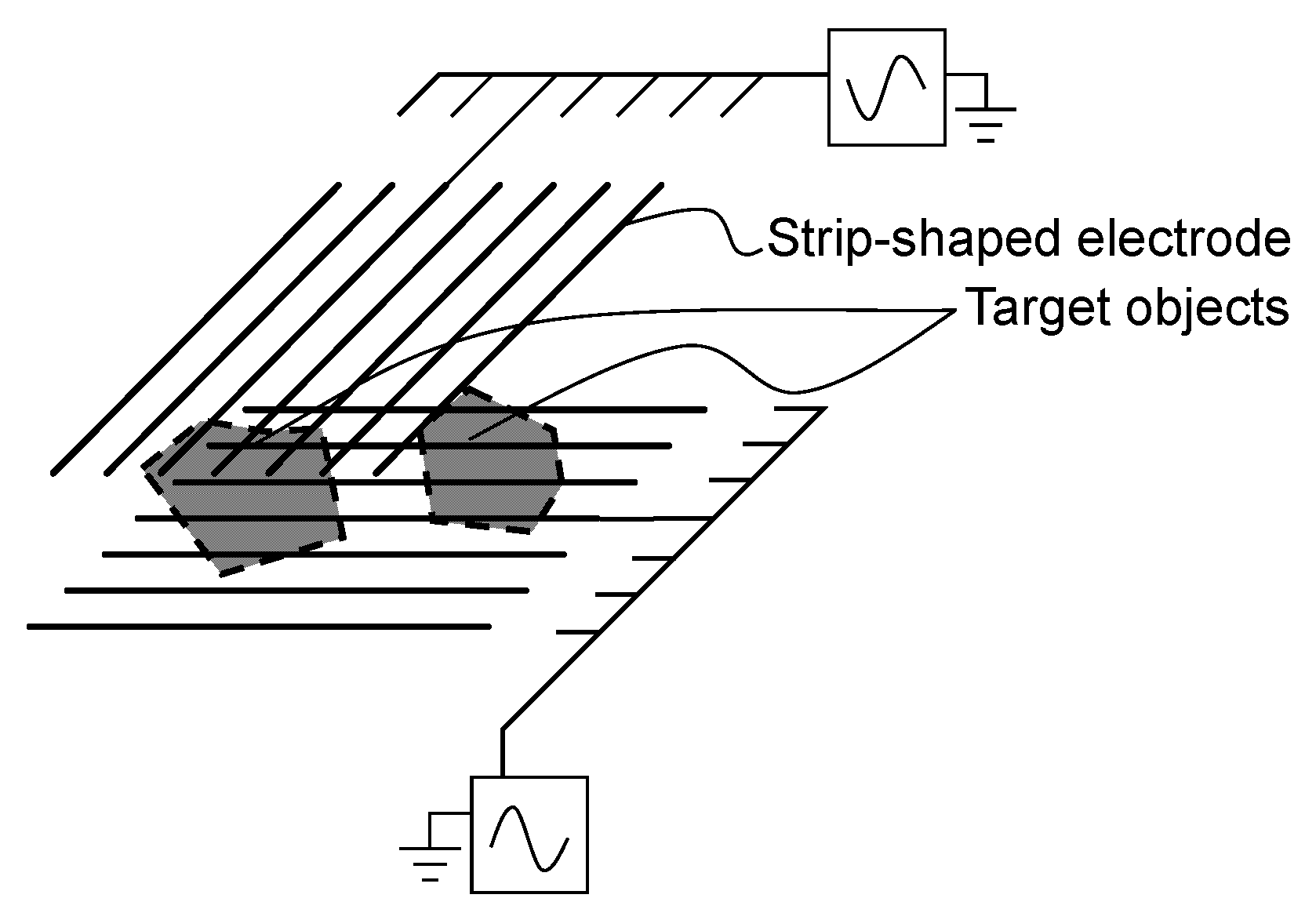
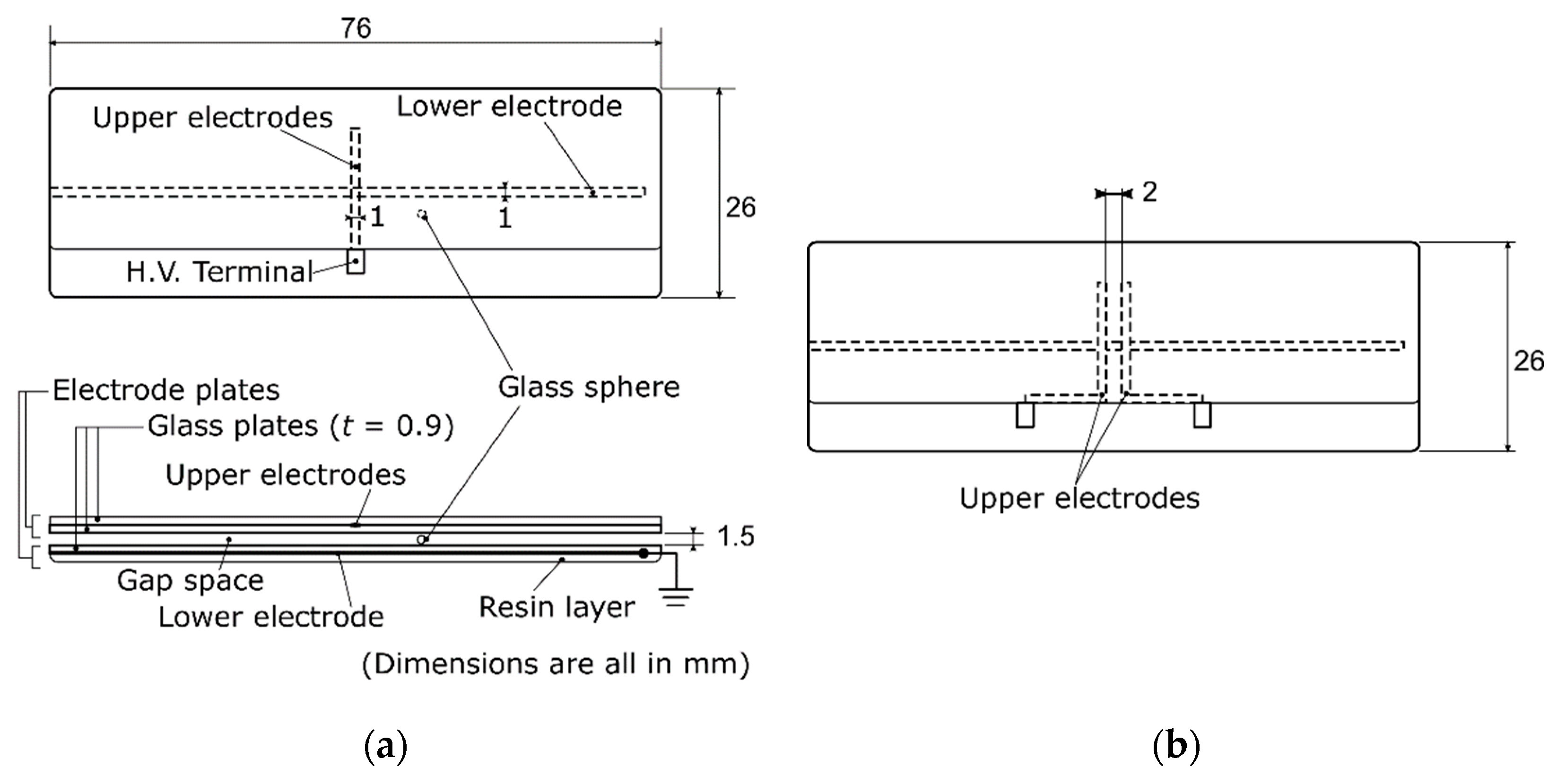




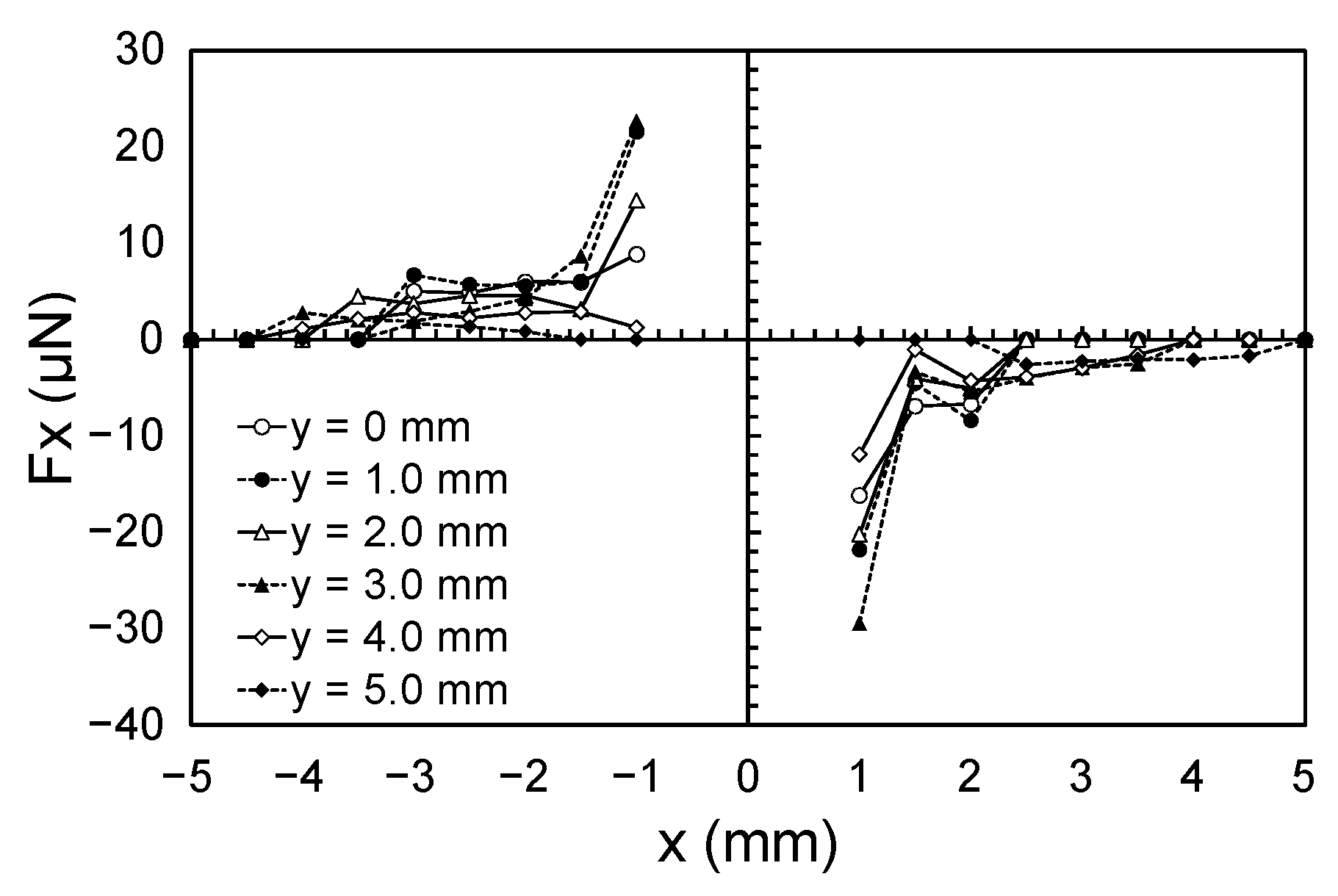
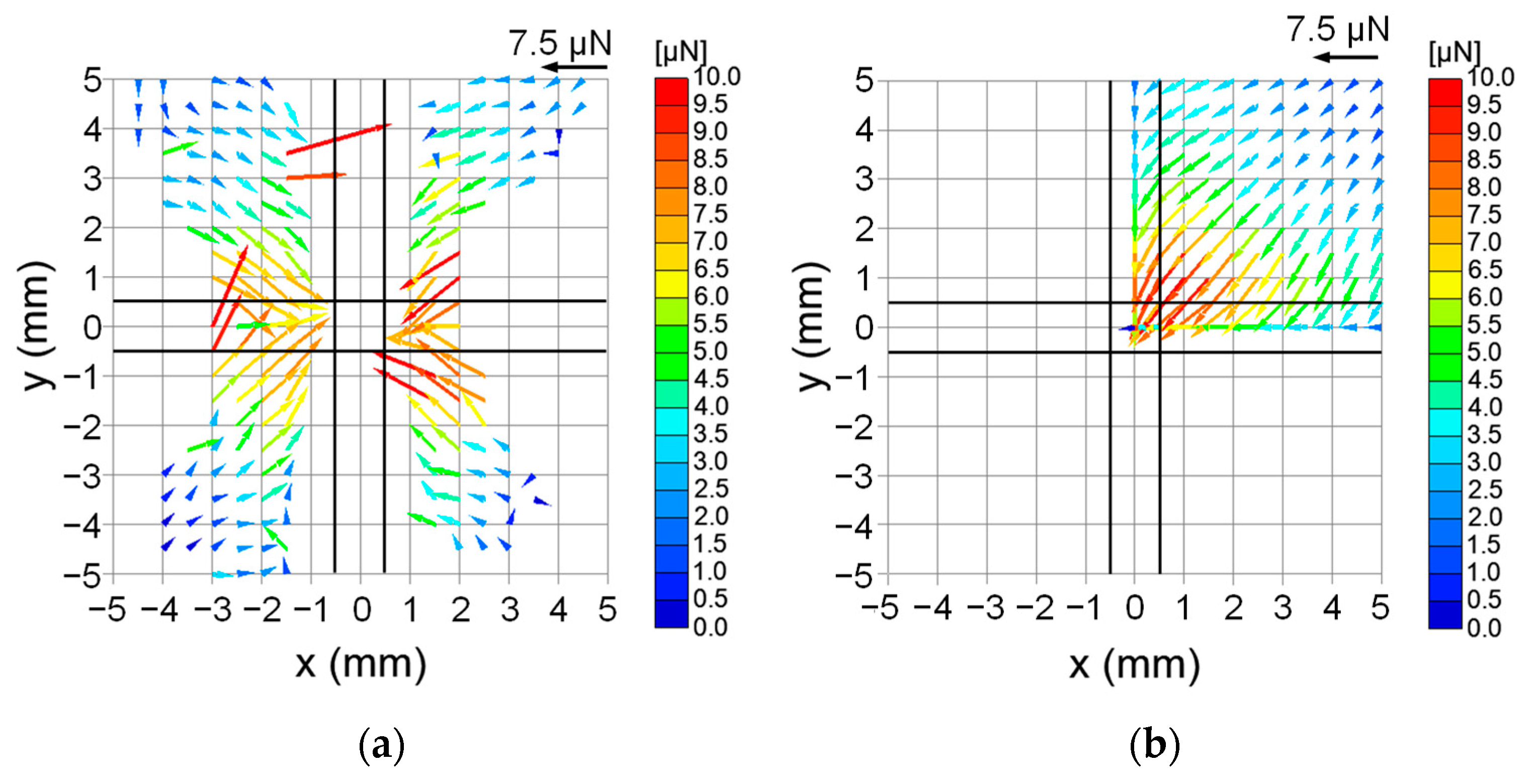
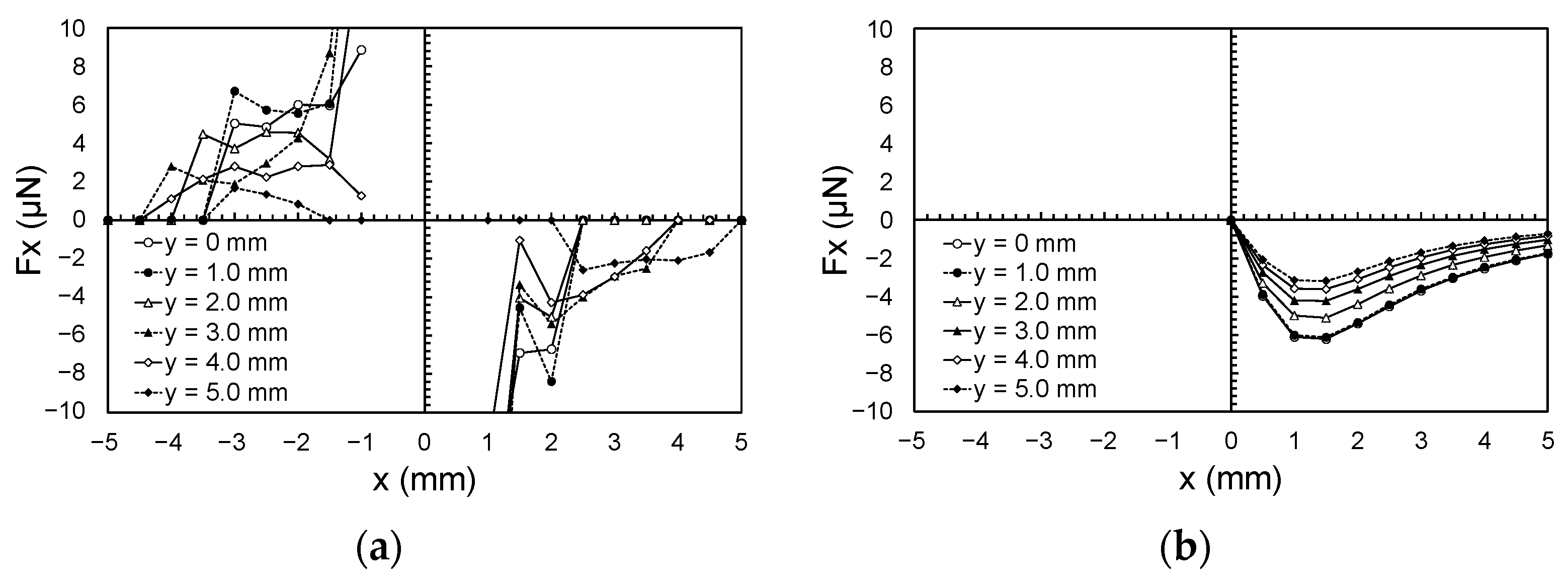
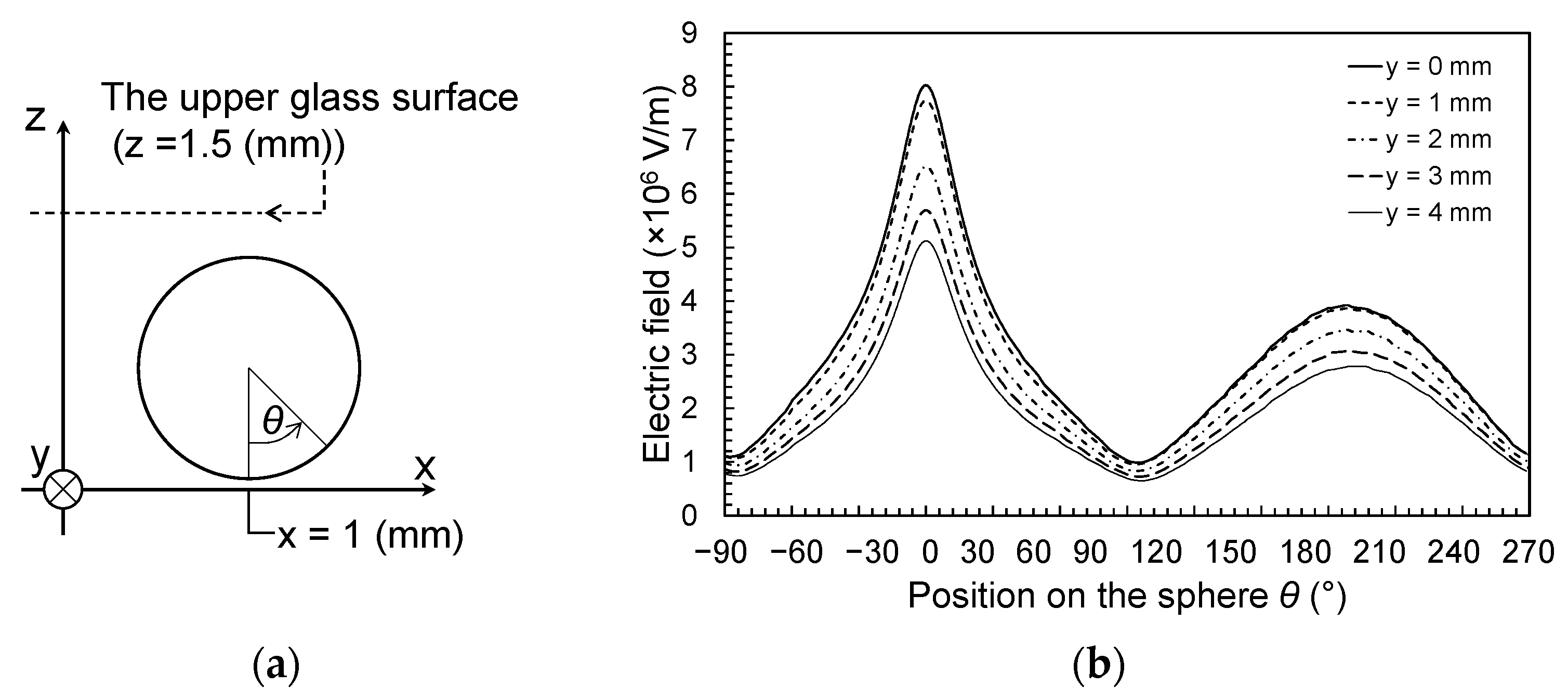
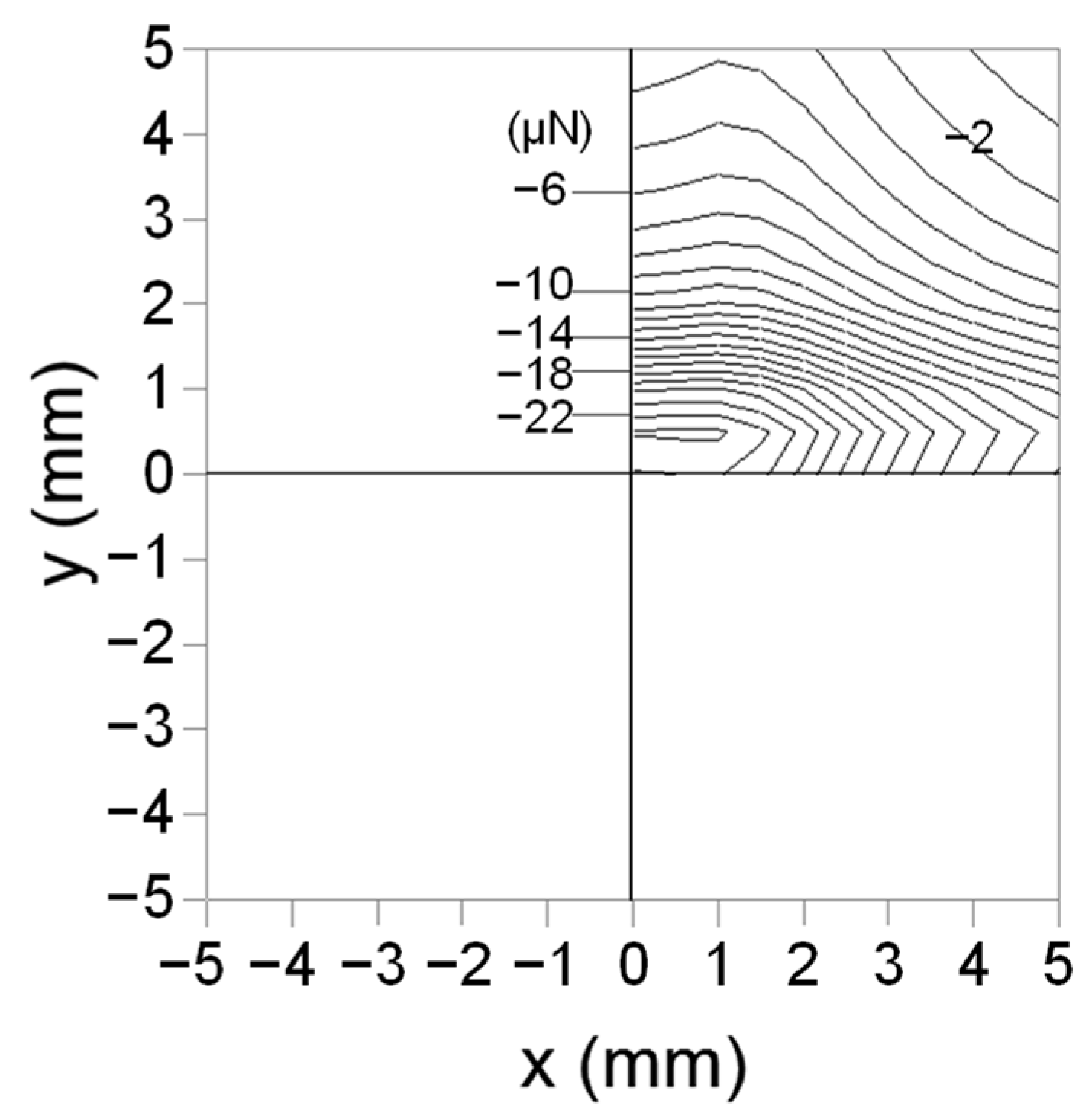





Publisher’s Note: MDPI stays neutral with regard to jurisdictional claims in published maps and institutional affiliations. |
© 2022 by the authors. Licensee MDPI, Basel, Switzerland. This article is an open access article distributed under the terms and conditions of the Creative Commons Attribution (CC BY) license (https://creativecommons.org/licenses/by/4.0/).
Share and Cite
Shirota, I.; Yoshida, K. Foundation of the Manipulation Technology for Tiny Objects Based on the Control of the Heterogeneity of Electric Fields. Energies 2022, 15, 4513. https://doi.org/10.3390/en15134513
Shirota I, Yoshida K. Foundation of the Manipulation Technology for Tiny Objects Based on the Control of the Heterogeneity of Electric Fields. Energies. 2022; 15(13):4513. https://doi.org/10.3390/en15134513
Chicago/Turabian StyleShirota, Isao, and Keiichiro Yoshida. 2022. "Foundation of the Manipulation Technology for Tiny Objects Based on the Control of the Heterogeneity of Electric Fields" Energies 15, no. 13: 4513. https://doi.org/10.3390/en15134513
APA StyleShirota, I., & Yoshida, K. (2022). Foundation of the Manipulation Technology for Tiny Objects Based on the Control of the Heterogeneity of Electric Fields. Energies, 15(13), 4513. https://doi.org/10.3390/en15134513






